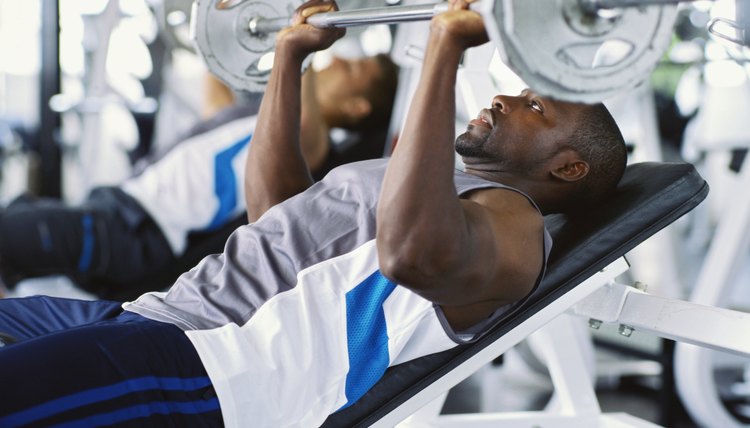Anabolic Exercise vs. Catabolic Exercise

Being fitness-oriented can be a sign of a healthful mindset, but pick any two highly dedicated exercisers and their goals may be vastly different. One person may wish to trim down and attain the sleek look of a greyhound; another may aim to bulk up and achieve the powerful physique of a bull. Workouts that lead to a reduction in mass are known as catabolic, whereas those that do the opposite are labeled anabolic. Accordingly, these exercises tend to be quite different.
At the Cellular Level
From the standpoint of biochemistry, catabolic reactions are those that break complex molecules into simpler ones, usually with the release of heat; anabolic reactions create complex molecules from simpler ones, with the heat generated in catabolic reactions being the driving force for anabolic ones. These reactions are mediates by chemical messengers called hormones, including the anabolic hormones testosterone, growth hormone and insulin, and the catabolic hormones cortisol, epinephrine and norepinephrine.
Anabolic Workouts
The term "anabolic exercise" is essentially synonymous with "strength training." To build muscle tissue, you must first overload the muscle or muscle group of interest and then allow the relevant hormones, such as growth hormone and testosterone, to do their job while you rest between workouts. Lifting weights is the classic type of strength training, but it comes in many forms -- free weights, resistance machines, isometric resistance exercises and even heavy-duty occupations such as construction work and logging.
Catabolic Workouts
Exercises that involve the release of catabolic hormones such as norepinephrine -- or adrenalin -- and cortisol will result in little to no accumulation of muscle mass but will burn lots of calories in the process of enhancing cardiovascular fitness. Thus catabolic exercise is essentially the same as aerobic exercise, and includes moderate-intensity workouts that can be sustained for as long as several hours; running, cycling, swimming and cross-country skiing are archetypcal examples. Because the muscle loading seen in resistance training is not present, anabolic hormones are not released in significant enough amounts to compete with their catabolic counterparts, and thus a tendency toward loss of body mass predominates.
Pharmacologic Interventions
Since the benefits of exercise are virtually all hormonally mediated, it follows logically that manipulating levels of key hormones in the body can produce exaggerated responses to exercise. An example is the use of synthetic testosterone and growth hormone in athletes participating in sports that require a great deal of muscle mass, such as powerlifting, football and bodybuilding. On the other hand, the use of stimulants that mimic adrenalin, such as amphetamines, is prevalent in sports such as cycling and track, where muscle mass is not necessarily helpful or desirable, but the ability to maintain high levels of power output and energy expenditure is.
References
Writer Bio
L.T. Davidson has been a professional writer and editor since 1994. He has been published in "Triathlete," "Men's Fitness" and "Competitor." A former elite cyclist with a Master of Science in exercise physiology from the University of Miami, Davidson is now in the broadcast news business.
